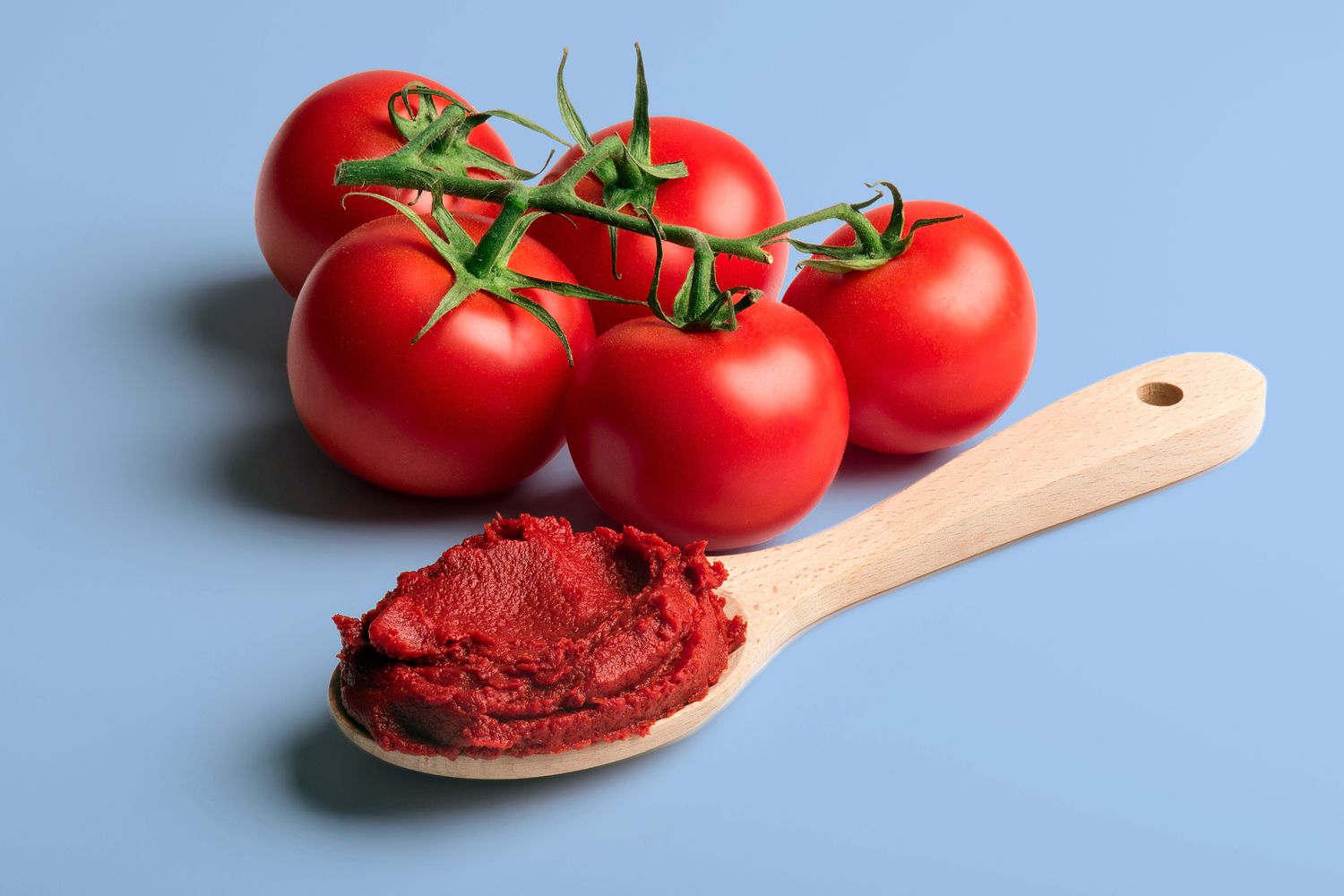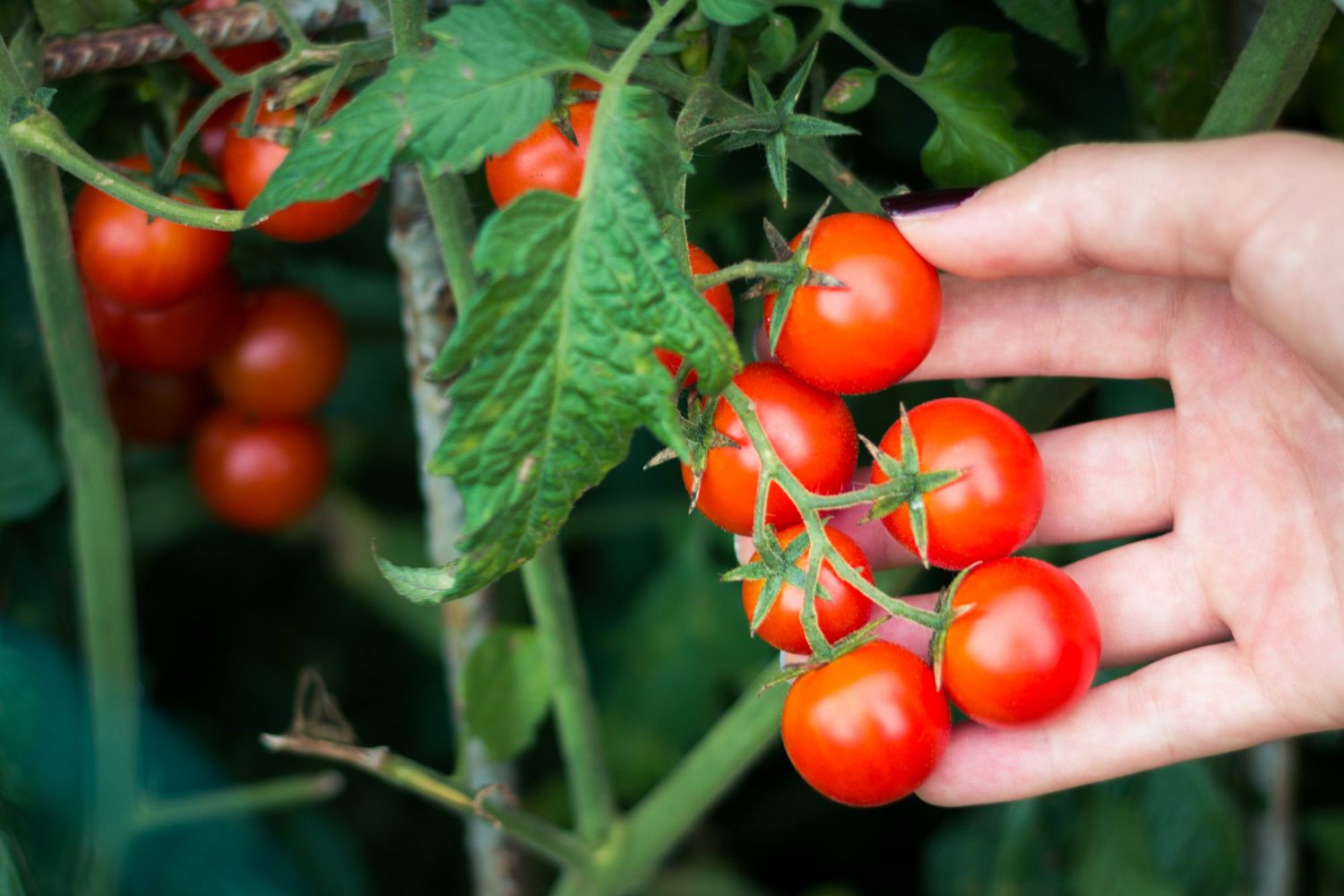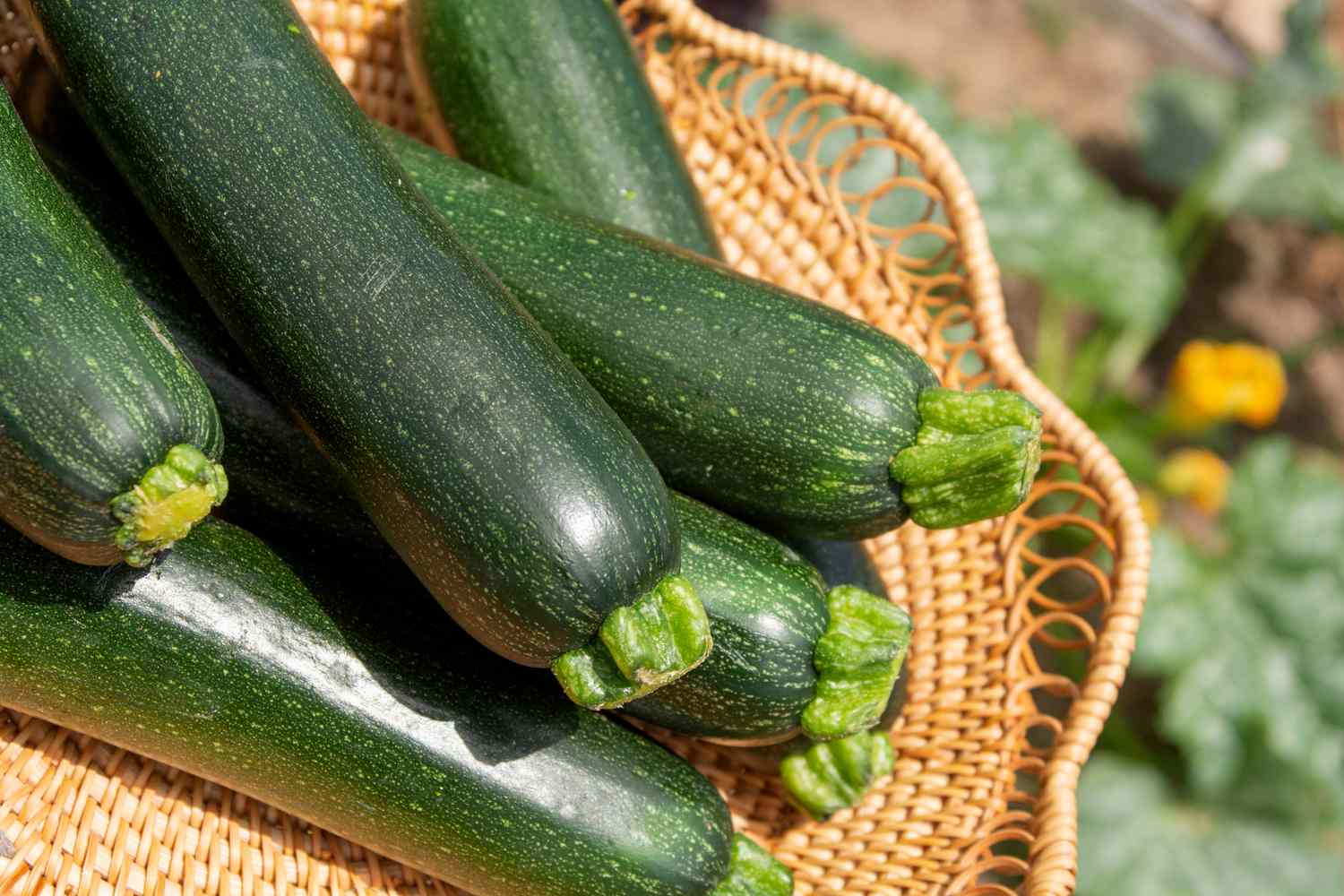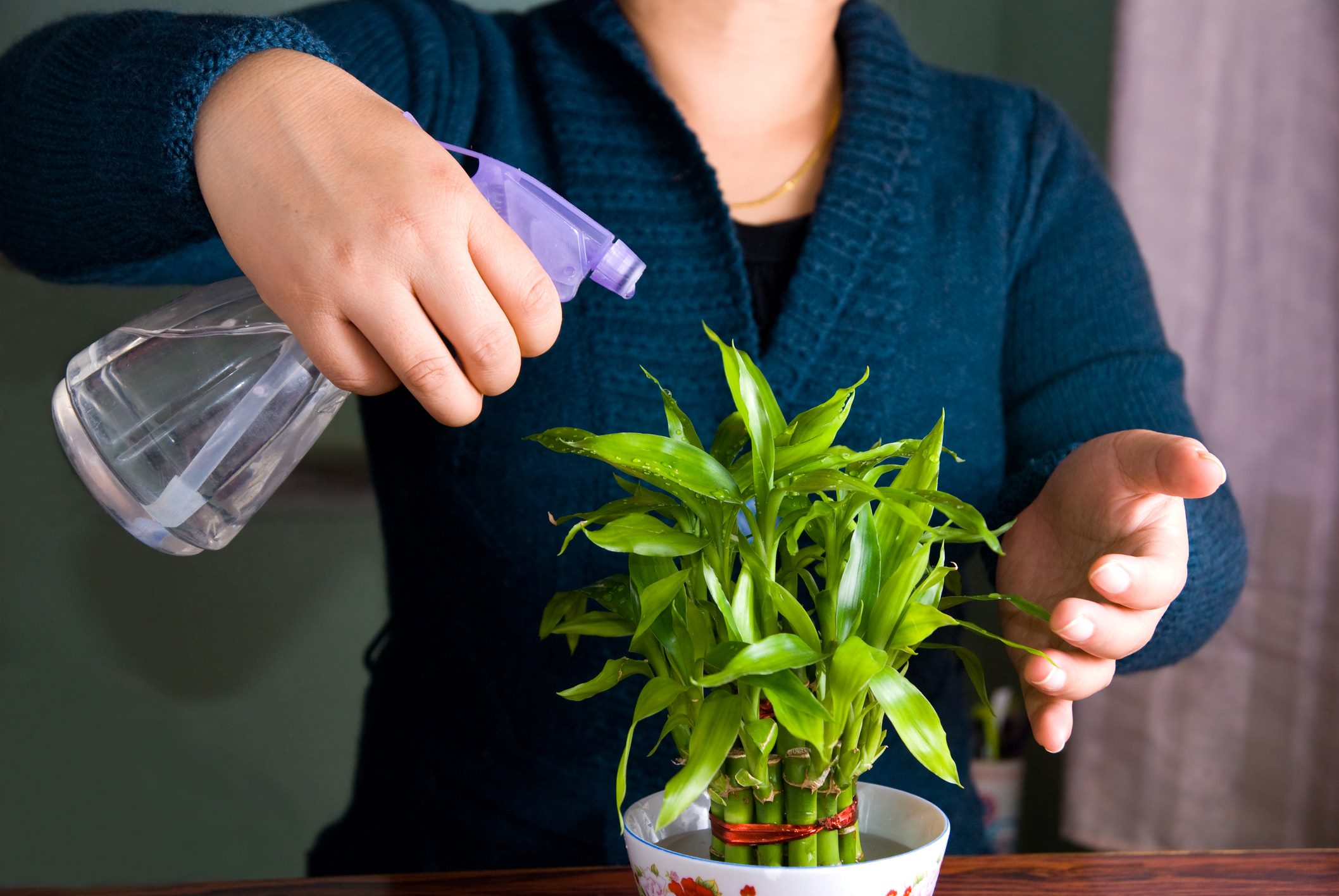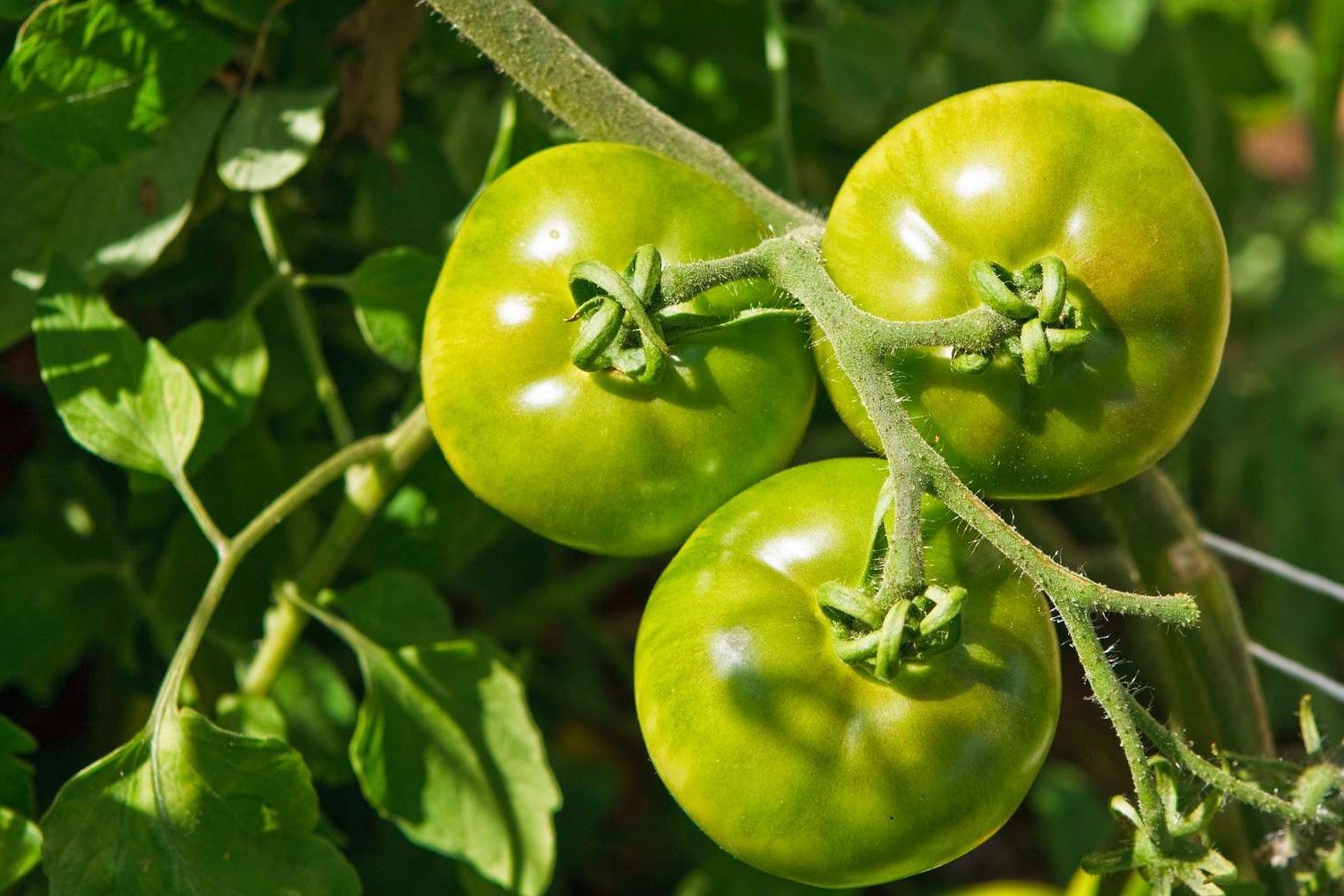Home>Food and Cooking>The Surprising Secret To Growing Tomatoes Revealed!
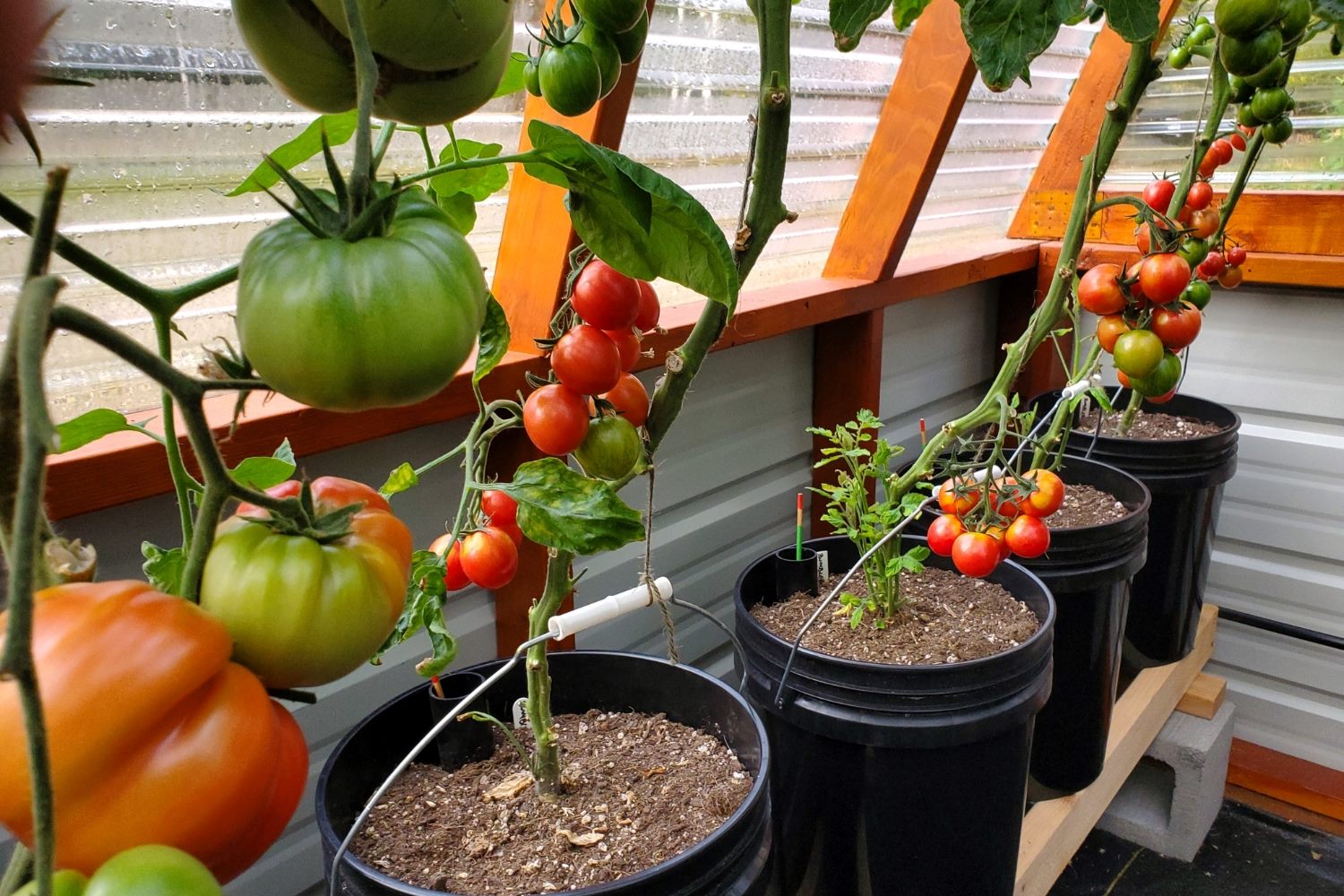

Food and Cooking
The Surprising Secret To Growing Tomatoes Revealed!
Published: January 26, 2024
Discover the secret to growing delicious tomatoes with our expert tips and tricks. Learn everything you need to know about food and cooking for a bountiful harvest. Unlock the key to tomato success today!
(Many of the links in this article redirect to a specific reviewed product. Your purchase of these products through affiliate links helps to generate commission for Noodls.com, at no extra cost. Learn more)
Table of Contents
Introduction
Tomatoes are a staple in many cuisines around the world, prized for their versatility, vibrant color, and delectable flavor. Whether sliced on a sandwich, tossed in a salad, or simmered into a savory sauce, tomatoes add a burst of freshness to countless dishes. What if I told you that you could elevate your culinary creations by growing your own tomatoes? It's not only rewarding but also surprisingly simple with the right knowledge and a bit of green-thumb magic.
In this comprehensive guide, we will delve into the art of growing tomatoes, from selecting the perfect varieties to nurturing them into plump, juicy fruits bursting with sun-ripened goodness. Whether you're a seasoned gardener or a novice with a newfound passion for homegrown produce, this guide will equip you with the essential tips and tricks to cultivate a bountiful tomato harvest.
Join me on this journey as we uncover the secrets to cultivating robust tomato plants, combating common challenges, and reaping the fruits of your labor. Get ready to embark on a flavorful adventure that begins with a single seed and culminates in a rich harvest of vine-ripened tomatoes, ready to grace your table with their irresistible taste and vibrant hues. Let's roll up our sleeves and unearth the surprising secret to growing tomatoes – it's time to unleash the full potential of your garden and savor the unmatched satisfaction of homegrown goodness.
Choosing the Right Tomato Varieties
When it comes to growing tomatoes, selecting the right varieties is the first crucial step towards a successful harvest. With an array of options available, each boasting unique characteristics and flavors, it's essential to choose varieties that align with your gardening goals and culinary preferences. Here are some key factors to consider when choosing the perfect tomato varieties for your garden:
1. Determinate vs. Indeterminate:
- Determinate Tomatoes: These varieties are often preferred for compact spaces or container gardening, as they tend to have a bushier growth habit and produce fruit within a defined timeframe. They are ideal for those seeking a concentrated harvest for canning or preserving.
- Indeterminate Tomatoes: These varieties exhibit vining growth habits and continue to produce fruits throughout the growing season until frost. They are well-suited for gardeners looking for a continuous supply of fresh tomatoes for salads, sandwiches, and culinary creations.
2. Flavor Profile:
- Consider the flavor profile of different tomato varieties, ranging from sweet and tangy to rich and robust. Cherry tomatoes offer a burst of sweetness, while heirloom varieties boast complex, old-fashioned flavors that elevate salads and sauces. Determining the flavor profile that resonates with your palate will guide you in selecting the most satisfying tomato varieties for your culinary endeavors.
3. Disease Resistance:
- Many modern tomato varieties are bred for resistance to common diseases such as blight, wilt, and nematodes. Prioritizing disease-resistant varieties can help safeguard your plants against potential threats, ensuring a healthier and more robust harvest.
4. Culinary Applications:
- Different tomato varieties excel in specific culinary applications. Plum tomatoes, such as Roma and San Marzano, are prized for their meaty texture and low moisture content, making them ideal for sauces, pastes, and canning. Beefsteak tomatoes, on the other hand, are renowned for their large, juicy fruits, perfect for slicing into sandwiches or enjoying fresh in salads.
5. Growing Conditions:
- Consider your local climate and growing conditions when selecting tomato varieties. Some varieties thrive in hot, arid climates, while others are better suited for cooler, more temperate regions. By choosing varieties that align with your specific growing environment, you can optimize the chances of a successful harvest.
By carefully considering these factors, you can narrow down the vast selection of tomato varieties and choose the ones that best align with your gardening aspirations and culinary preferences. Whether you opt for heirloom treasures, modern hybrids, or a mix of both, the right tomato varieties will set the stage for a rewarding and flavorful growing experience.
Soil Preparation and Planting
The foundation for a thriving tomato crop lies in meticulous soil preparation and strategic planting. By establishing an optimal growing environment and providing the right conditions for young tomato plants, you can set the stage for robust growth and a prolific harvest. Here's a comprehensive guide to soil preparation and planting techniques that will empower you to cultivate healthy and productive tomato plants.
1. Selecting the Ideal Site:
Before delving into soil preparation, it's essential to choose an ideal site for planting your tomatoes. Select a location that receives ample sunlight, ideally 6-8 hours of direct sunlight per day, to promote strong growth and fruit development. Additionally, ensure that the site offers good air circulation and adequate drainage to prevent waterlogging, which can lead to root rot and other moisture-related issues.
2. Soil Testing and Amendment:
Conduct a soil test to assess the pH level and nutrient composition of your garden soil. Tomatoes thrive in slightly acidic soil with a pH range of 6.0 to 6.8. If necessary, amend the soil by incorporating organic matter such as compost, well-rotted manure, or peat moss to improve its texture, fertility, and drainage. This step is crucial for creating a nutrient-rich and well-balanced growing medium that supports vigorous tomato growth.
3. Digging and Bed Preparation:
Prepare the planting area by digging the soil to a depth of 12-18 inches, breaking up any compacted layers and removing debris such as rocks and roots. Form raised beds or mounds if your soil has poor drainage, as this promotes better aeration and prevents water stagnation around the roots. Incorporate the amended organic matter into the soil, ensuring a uniform distribution throughout the planting area.
4. Planting Techniques:
When it comes to planting tomatoes, the depth and spacing are critical factors for establishing strong root systems and maximizing sunlight exposure. Remove the lower leaves from the tomato seedlings and plant them deep in the soil, burying the stem up to the first set of leaves. This encourages the development of additional roots along the buried stem, enhancing the plant's stability and nutrient uptake. Space the plants approximately 18-24 inches apart to allow for adequate airflow and room for expansion as they mature.
5. Mulching and Watering:
After planting, apply a layer of organic mulch, such as straw or shredded leaves, around the base of the tomato plants. Mulching helps retain soil moisture, suppresses weed growth, and regulates soil temperature, creating a favorable microclimate for the plants. Water the newly planted seedlings thoroughly to promote root establishment, and maintain consistent moisture levels throughout the growing season, ensuring that the soil remains evenly moist but not waterlogged.
By meticulously preparing the soil and implementing strategic planting techniques, you can lay the groundwork for healthy, vigorous tomato plants that are poised to thrive and yield an abundant harvest. The careful attention given to soil preparation and planting sets the stage for a successful growing season, marking the beginning of a rewarding journey toward homegrown tomatoes that embody the essence of freshness and flavor.
Watering and Fertilizing
Proper watering and fertilizing practices are essential pillars of successful tomato cultivation, playing a pivotal role in nurturing robust plants and maximizing fruit production. By understanding the specific needs of tomato plants and implementing targeted watering and fertilization strategies, you can foster a thriving garden brimming with healthy, flavorful tomatoes.
Watering Techniques:
Tomatoes have distinct watering requirements that, when met, contribute to their overall health and productivity. Consistent moisture is crucial for preventing issues such as blossom end rot and irregular fruit development. Here are key techniques for effective tomato watering:
-
Deep, Infrequent Watering: Rather than frequent shallow watering, which can lead to shallow root systems, aim for deep, infrequent watering sessions. This encourages the development of deep, resilient roots that are better equipped to withstand drought conditions.
-
Watering at the Base: Direct the water at the base of the plants to minimize moisture on the foliage, reducing the risk of fungal diseases. Drip irrigation or soaker hoses are excellent options for delivering water directly to the root zone.
-
Morning Watering: Whenever possible, water your tomato plants in the morning to allow excess moisture on the foliage to evaporate during the day. This can help prevent fungal infections and promote a healthier growing environment.
Fertilization Practices:
Tomatoes are considered heavy feeders, requiring a steady supply of nutrients to support their vigorous growth and fruit production. Implementing a balanced fertilization regimen is vital for ensuring that your tomato plants have access to essential nutrients throughout the growing season. Here's how to effectively fertilize your tomato plants:
-
Organic Matter: Prior to planting, incorporate organic matter such as compost or well-rotted manure into the soil to enrich its nutrient content and improve its structure. This provides a solid foundation of organic nutrients for the plants to utilize.
-
Slow-Release Fertilizers: Consider using slow-release granular fertilizers formulated specifically for tomatoes. These products provide a steady, gradual release of essential nutrients over an extended period, promoting sustained growth and fruit development.
-
Balanced Formulas: Select a balanced fertilizer with a formulation such as 10-10-10 or 5-10-10, ensuring that it contains a proportional blend of nitrogen, phosphorus, and potassium. This supports overall plant health, strong root development, and the production of quality fruits.
-
Foliar Feeding: Supplement traditional soil fertilization with occasional foliar feeding, applying a water-soluble, balanced fertilizer directly to the leaves. This method allows for rapid nutrient uptake and can help address nutrient deficiencies during critical growth stages.
By adhering to these targeted watering and fertilization practices, you can provide your tomato plants with the optimal growing conditions and nutritional support they need to thrive. Consistency, attentiveness, and a focus on the specific requirements of tomato plants will yield healthy, vigorous specimens that bear the hallmark of abundant, flavorful tomatoes, fulfilling the promise of a fruitful harvest.
Pruning and Supporting
Pruning and supporting are essential components of tomato care, contributing to plant health, fruit quality, and overall productivity. By implementing strategic pruning techniques and providing sturdy support for the growing vines, gardeners can optimize the growing environment for their tomato plants and enhance the yield of delectable, sun-ripened tomatoes.
Pruning Techniques:
Pruning tomato plants involves the selective removal of certain growth points, such as suckers and lower foliage, to promote better air circulation, light penetration, and fruit development. Here are key techniques for effective tomato pruning:
-
Sucker Removal: Suckers, the small shoots that emerge in the leaf axils of tomato plants, can divert energy away from fruit production and lead to overcrowded, tangled foliage. By regularly removing these suckers, particularly in indeterminate varieties, gardeners can direct the plant's resources toward fruit-bearing branches, resulting in larger, more flavorful tomatoes.
-
Lower Foliage Pruning: Trimming the lower foliage of tomato plants, especially as they mature, helps reduce the risk of soil-borne diseases and improves airflow around the base of the plants. This practice can also facilitate easier access for watering, fertilizing, and pest management while encouraging the plants to channel their energy into upper fruit-bearing clusters.
-
Pruning Overgrowth: As tomato plants flourish, they may exhibit excessive vegetative growth, leading to dense canopies that hinder sunlight penetration and air circulation. Pruning back overgrown branches and excess foliage allows for better light exposure and airflow, contributing to improved fruit ripening and overall plant vitality.
Supporting Methods:
Providing adequate support for tomato plants is crucial for preventing sprawling growth, protecting delicate fruit clusters, and maintaining plant stability. Various support methods can be employed to uphold the vigorous growth of tomato vines:
-
Cage Systems: Sturdy wire cages or trellises offer vertical support for indeterminate tomato varieties, allowing the vines to climb upward and reducing the risk of sprawling and ground contact. Caging also facilitates convenient pruning and harvesting, keeping the plants neatly contained within the support structure.
-
Staking: Using wooden or metal stakes to support individual tomato plants provides vertical stability and encourages upward growth. Staking is particularly beneficial for determinate varieties and can help prevent the plants from toppling under the weight of developing fruits.
-
Stringing Techniques: Implementing a stringing system, such as the Florida Weave or basket-weave method, involves weaving twine or strings between planted rows to create a supportive framework for the growing tomato vines. This method effectively prevents excessive bending and ensures uniform distribution of the plants, promoting efficient management and optimal fruit exposure.
By incorporating these pruning and supporting techniques into your tomato cultivation practices, you can foster healthier, more productive plants and elevate the quality of your harvest. The meticulous attention given to pruning and supporting not only enhances the visual appeal of your garden but also yields a bounty of succulent, flavorful tomatoes that embody the essence of homegrown goodness.
Pest and Disease Management
Pest and disease management is a critical aspect of cultivating thriving tomato plants, safeguarding them against potential threats and ensuring a bountiful harvest of healthy, flavorful fruits. By proactively addressing common pests and diseases that affect tomatoes, gardeners can mitigate risks and maintain the vitality of their plants throughout the growing season. Here's a comprehensive overview of effective pest and disease management strategies that will empower you to protect your tomato crop and nurture robust, disease-resistant plants.
Pest Management:
-
Aphids and Whiteflies: These sap-sucking insects can quickly infest tomato plants, causing stunted growth and distorted foliage. Employ natural predators such as ladybugs and lacewings to control aphid populations, and use reflective mulches to deter whiteflies by disrupting their feeding and oviposition.
-
Hornworms and Caterpillars: Handpick hornworms and caterpillars from the plants, and encourage beneficial insects such as parasitic wasps to aid in biological control. Applying Bacillus thuringiensis (Bt) as a targeted biological insecticide can effectively manage caterpillar infestations without harming beneficial insects.
-
Spider Mites: Mitigate spider mite infestations by regularly spraying the undersides of leaves with a strong blast of water to dislodge the pests. Introduce predatory mites or use insecticidal soaps to combat severe spider mite outbreaks, preserving the plant's vigor and foliage health.
-
Tomato Fruitworms: Monitor for signs of fruitworm damage and remove affected fruits promptly. Employ pheromone traps to disrupt the mating behavior of adult fruitworms, reducing their population and minimizing crop damage.
Disease Management:
-
Early Blight and Late Blight: Implement a stringent sanitation routine by removing and disposing of affected plant debris to prevent the spread of fungal spores. Apply copper-based fungicides preventively and maintain proper plant spacing to enhance air circulation and reduce humidity, creating an unfavorable environment for blight development.
-
Fusarium and Verticillium Wilt: Select tomato varieties with resistance to Fusarium and Verticillium wilt, and rotate crops to minimize soil-borne disease pressure. Incorporate organic amendments such as compost and beneficial fungi to promote soil health and suppress pathogen activity.
-
Blossom End Rot: Maintain consistent soil moisture levels to prevent calcium uptake imbalances, a common cause of blossom end rot. Mulch the soil to regulate moisture and employ calcium supplements to address deficiencies, fortifying the fruits against this physiological disorder.
-
Powdery Mildew: Monitor plants for early signs of powdery mildew and promptly remove affected foliage. Apply sulfur-based fungicides or neem oil as organic control measures, and ensure proper spacing and adequate ventilation to discourage the development of powdery mildew.
By integrating these proactive pest and disease management strategies into your tomato cultivation practices, you can fortify your plants against common threats and nurture a robust, disease-resistant crop. Vigilance, early intervention, and a focus on preventive measures will empower you to overcome potential challenges and cultivate a thriving garden teeming with vibrant, delectable tomatoes.
Harvesting and Storing
As the culmination of diligent care and nurturing, the moment of harvesting tomatoes is a gratifying milestone for gardeners. The process of harvesting and storing tomatoes is a pivotal stage that ensures the preservation of their peak flavor and quality, allowing you to savor the fruits of your labor well beyond the growing season. Here's a comprehensive guide to harvesting and storing tomatoes, encompassing best practices and insightful tips to maximize the enjoyment of your homegrown bounty.
1. Optimal Harvest Time:
Timing is crucial when it comes to harvesting tomatoes, as the fruits attain their peak flavor and ripeness at specific stages of maturity. Look for visual cues such as vibrant color, firm texture, and glossy skin, indicating that the tomatoes are ready for harvest. Depending on the variety, ripe tomatoes should exhibit rich hues, whether it's the classic red, golden yellow, deep purple, or striped patterns characteristic of heirloom varieties.
2. Gentle Harvesting Techniques:
Handle the tomatoes with care during the harvesting process to avoid bruising or damaging the delicate fruits. Gently twist the ripe tomatoes from the vine, ensuring that the stems remain intact. Alternatively, use clean garden shears or scissors to snip the fruits from the plant, taking care to leave a small portion of the stem attached. This approach minimizes stress on the plants and preserves the integrity of the harvested tomatoes.
3. Post-Harvest Handling:
Upon harvesting, promptly sort the tomatoes based on their ripeness and intended use. Separate fully ripe tomatoes from those that are still maturing, as the former are ideal for immediate consumption, while the latter can be set aside to ripen further indoors. Inspect the harvested fruits for any signs of damage or blemishes, and set aside any imperfect specimens for immediate use or processing.
4. Storing Techniques:
For short-term storage, arrange ripe tomatoes in a single layer in a cool, well-ventilated area, away from direct sunlight. This allows the fruits to retain their flavor and freshness for several days. Avoid refrigerating fully ripe tomatoes, as this can compromise their texture and diminish their flavor. Instead, store them at room temperature and consume them within a few days for the best culinary experience.
5. Long-Term Preservation:
To extend the enjoyment of your tomato harvest, consider preserving the fruits through methods such as canning, freezing, or drying. Canning ripe tomatoes into sauces, salsas, or whole tomatoes allows you to capture their peak flavor for use in diverse culinary creations throughout the year. Freezing tomatoes for later use in soups, stews, and sauces is another convenient preservation method that retains their essence.
6. Flavorful Culinary Creations:
With a bounty of freshly harvested and preserved tomatoes at your disposal, unleash your culinary creativity by incorporating them into an array of delectable dishes. From vibrant salads and tangy salsas to rich pasta sauces and savory soups, the versatility of homegrown tomatoes lends itself to an endless array of flavorful culinary creations that celebrate the essence of freshness and wholesome goodness.
By embracing these best practices for harvesting and storing tomatoes, you can savor the full spectrum of flavors and culinary possibilities that your homegrown harvest has to offer. The journey from vine to table culminates in a symphony of vibrant colors, rich aromas, and irresistible flavors, embodying the essence of homegrown goodness that elevates every dish to new heights of culinary delight.
Conclusion
As we draw the curtain on this comprehensive guide to growing tomatoes, it's evident that the journey from seed to harvest is a rewarding and transformative experience. Cultivating robust tomato plants not only yields a bountiful supply of fresh, flavorful fruits but also fosters a profound connection to the natural world and the culinary treasures it bestows. The surprising secret to growing tomatoes lies in the harmonious interplay of attentive care, strategic techniques, and a deep appreciation for the art of gardening.
From the initial selection of the perfect tomato varieties to the meticulous soil preparation, planting, and nurturing of the plants, each stage of the journey contributes to the tapestry of flavors and aromas that define homegrown tomatoes. The careful orchestration of watering, fertilizing, pruning, and supporting the plants reflects a dedication to fostering their vitality and maximizing their potential for abundant harvests.
Furthermore, the vigilance and proactive measures taken in pest and disease management underscore the commitment to preserving the health and resilience of the tomato crop. By safeguarding the plants against common threats, gardeners can cultivate a thriving garden teeming with vibrant, delectable tomatoes that embody the essence of homegrown goodness.
The culmination of this journey, marked by the artful harvesting and thoughtful storage of the ripe fruits, extends the joy of homegrown tomatoes well beyond the growing season. Whether enjoyed fresh, preserved through canning or freezing, or infused into a myriad of culinary creations, the fruits of labor resonate with the essence of freshness, flavor, and wholesome goodness.
As we reflect on the journey from vine to table, it becomes clear that the surprising secret to growing tomatoes transcends mere horticulture; it encapsulates a profound appreciation for nature's abundance and the timeless traditions of tending the land. The act of growing tomatoes is a testament to the enduring allure of cultivating one's sustenance, fostering a deeper connection to the rhythms of the natural world and the simple pleasures of savoring the fruits of one's labor.
In closing, the surprising secret to growing tomatoes is not merely a set of techniques and practices; it is a celebration of the inherent magic found in nurturing life and reaping the rewards of nature's generosity. It is an invitation to embark on a flavorful adventure, where each sun-ripened tomato embodies the essence of homegrown goodness and the timeless joy of cultivating the finest flavors from the earth.
